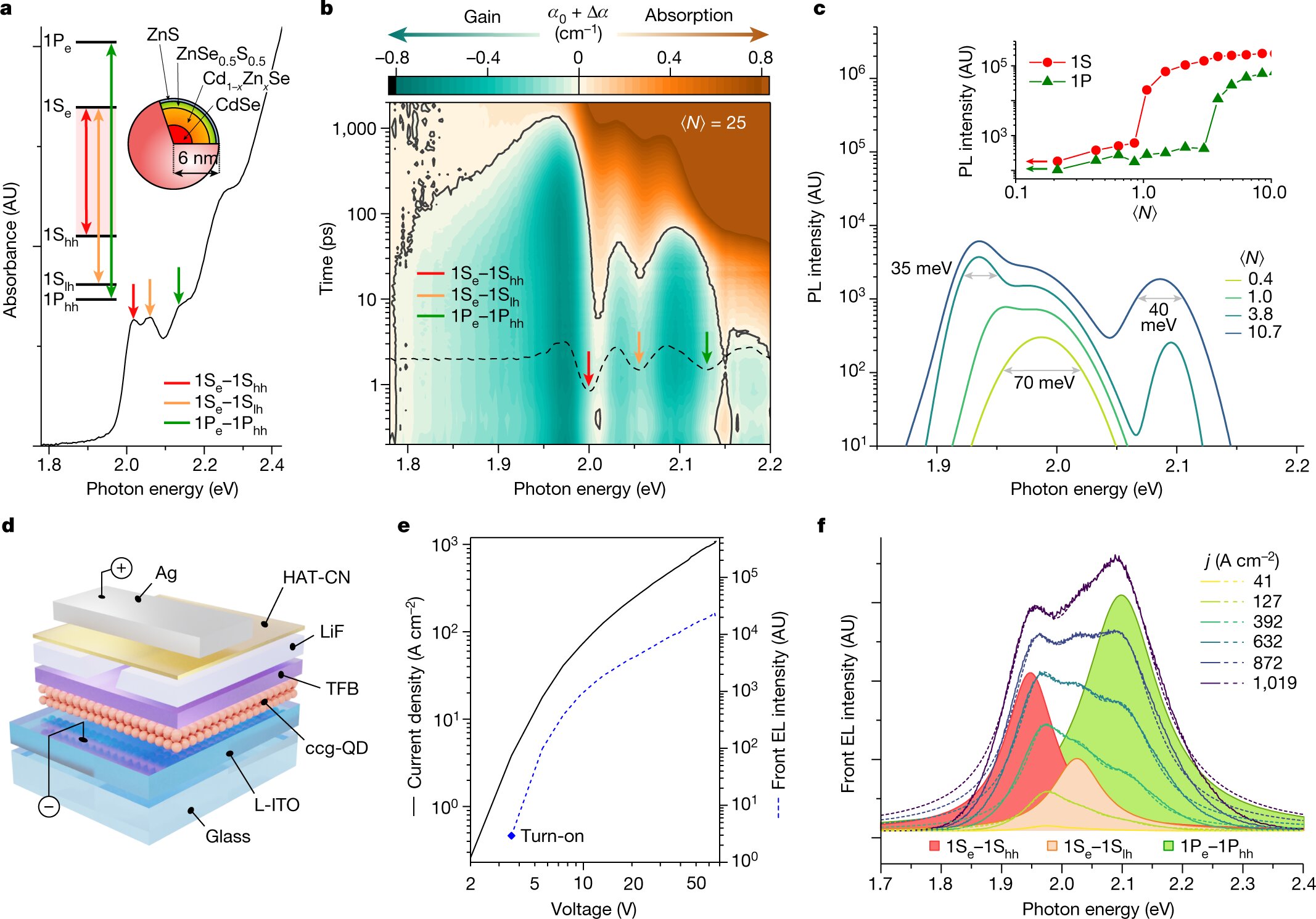Los Alamos scientists have achieved light amplification using electrically driven devices based on solution-cast semiconductor nanocrystals. These tiny specs of semiconductor matter are made through chemical synthesis, also known as colloidal quantum dots. This breakthrough, reported in the journal Nature, opens the door to a completely new class of electrically pumped lasing devices. These laser diodes are highly flexible and solution-processable, which means they can be prepared on any crystalline or non-crystalline substrate, without the need for sophisticated vacuum-based growth techniques or a highly controlled clean-room environment.
This achievement has been decades in the making. Los Alamos has been researching syntheses of nanocrystals, their photophysical properties, and the optical and electrical design of quantum dot devices. According to Victor Klimov, Laboratory Fellow and leader of the quantum dot research initiative, “The capabilities to attain light amplification with electrically driven colloidal quantum dots have emerged from decades of our previous research.”
The developed electrically driven light amplification with solution-cast nanocrystals could help resolve a long-standing challenge of integrating photonic and electronic circuits on the same silicon chip. It can also advance many other fields ranging from lighting and displays to quantum information, medical diagnostics, and chemical sensing.
Traditional laser diodes produce highly monochromatic, coherent light under electrical excitation. However, they have deficiencies, such as challenges with scalability, gaps in the range of accessible wavelengths, and an incompatibility with silicon technologies, which limits their use in microelectronics.
Colloidal quantum dots offer advantages such as a size-tunable emission wavelength, low-optical gain thresholds, and high-temperature stability of lasing characteristics, making them an attractive solution for implementing solution-processable laser diodes. However, multiple challenges have hindered the technology’s development, including fast Auger recombination of gain-active multicarrier states, poor stability of nanocrystal films at high current densities required for lasing, and the difficulty of obtaining net optical gain in a complex electrically driven device.
The Los Alamos team developed a highly effective approach to suppress nonradiative Auger decay by introducing carefully engineered compositional gradients into the quantum dot interior. They also confined the electric current in spatial and temporal domains to ultimately reduce the amount of generated heat and simultaneously improve heat exchange with the surrounding medium.
The team demonstrated bright amplified spontaneous emission (ASE) realized with electrically pumped colloidal quantum dots. In the ASE process, “seed photons” produced by spontaneous emission launch a “photon avalanche” driven by stimulated emission from the excited quantum dots. This boosts the intensity of the emitted light, increases its directionality, and enhances coherence. ASE can be considered a precursor of lasing, the effect which emerges when an ASE-capable medium is combined with an optical resonator.
The ASE-type quantum dot LEDs represent considerable practical utility as sources of highly directional, narrow-band light for applications in consumer products, imaging, and scientific instrumentation. The team is also working on realizing laser oscillations with electrically pumped quantum dots.



Leave a Reply